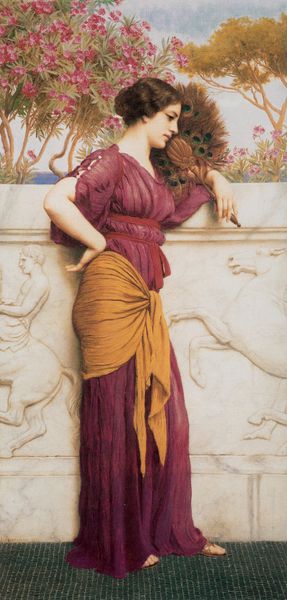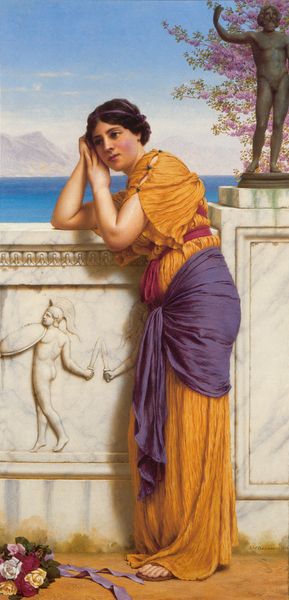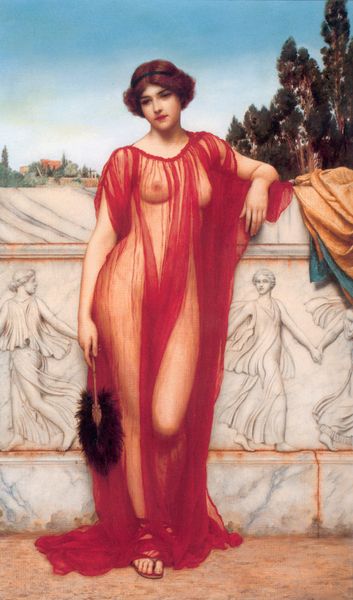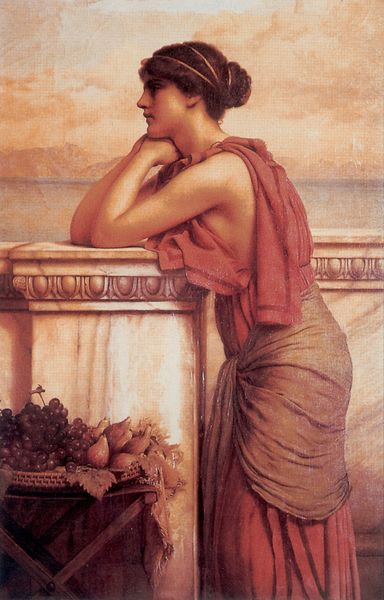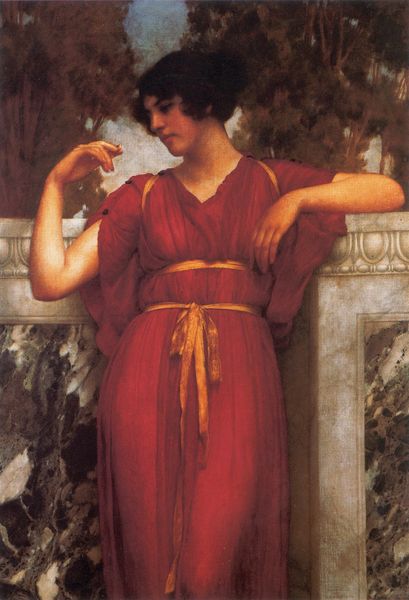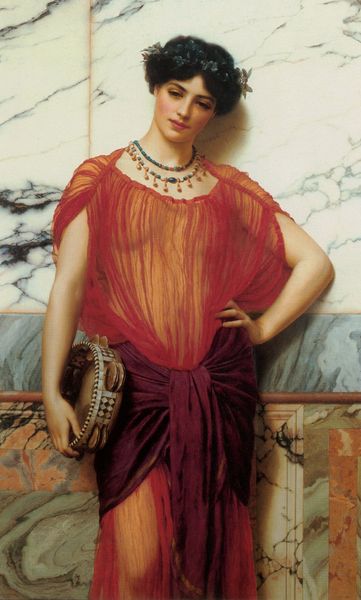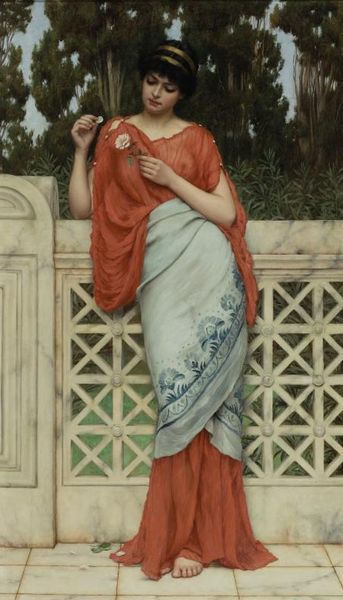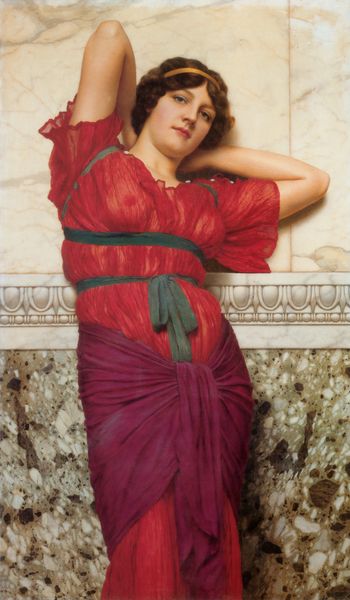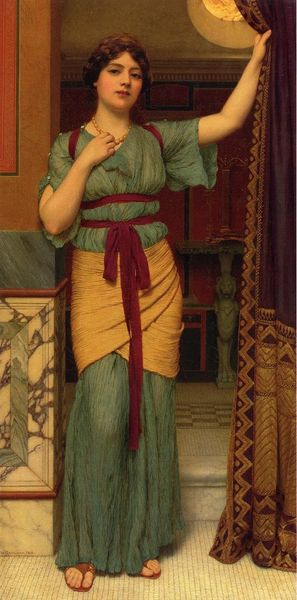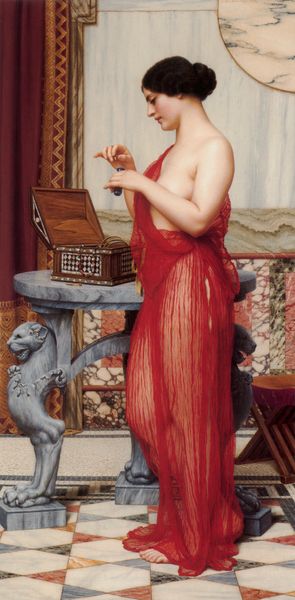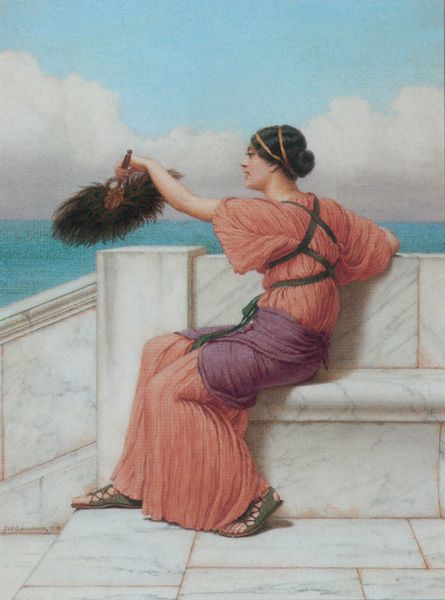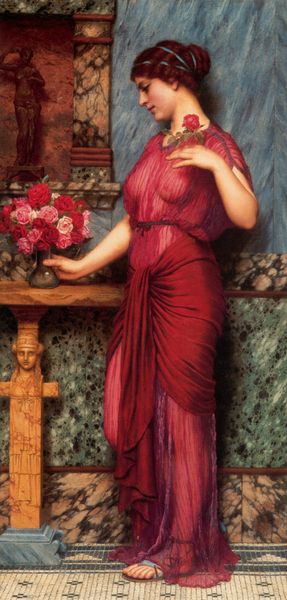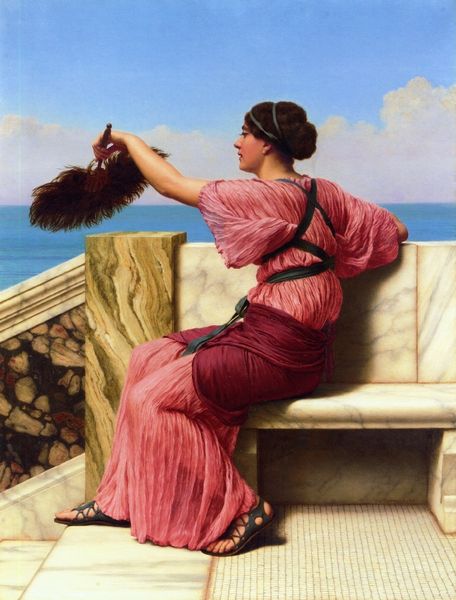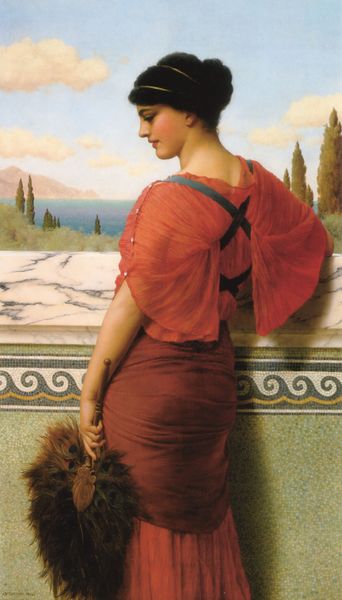
Copyright: Public domain
Editor: We are looking at John William Godward’s “The Thoughtful One” from 1913. Painted with oils, it shows a woman in classical garb looking a bit melancholic. It’s a beautiful painting, but there is also something a little…staged about it. How do you interpret this work, especially considering the materials used? Curator: Let’s think about that staging. The careful rendering of the marble, the luxurious fabric of her gown, even the peacock feathers—all these materials speak to a specific kind of consumer, a patron who values the tangible representation of wealth and status. But consider too that "academic art" often served to reinforce social hierarchies through its choice of subject and the material investment required for its creation and purchase. Where do the artistic labour and socio-economic class fit within this image? Editor: That's a compelling point. The artist certainly invests considerable skill in representing the texture of these materials, but for whom? Is the painting more about the display of skill and access to materials than about genuine emotion? Curator: Exactly. The work embodies the tensions between artistic creation, economic structures, and social status. Can the depiction of luxury be separated from the very real labour required to produce it, or from its place in a capitalist economy of display? Does Godward acknowledge that divide? Editor: I hadn’t thought about it that way before. Focusing on the materiality and social context really sheds light on the painting's potential message beyond the aesthetic. I am starting to see it in a totally new light now. Curator: Right? I find that by exploring the methods, materials, and meaning-making of art, and viewing them within their relevant historical and social contexts, we can uncover rich ideas and cultural implications.
Comments
No comments
Be the first to comment and join the conversation on the ultimate creative platform.
